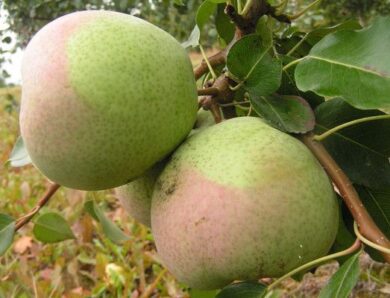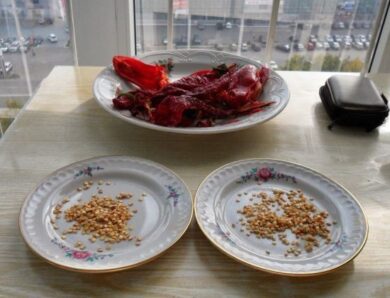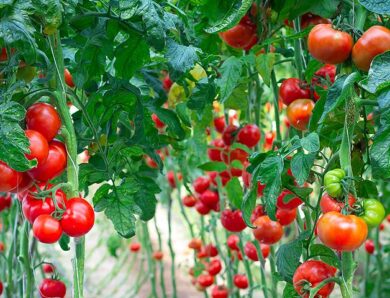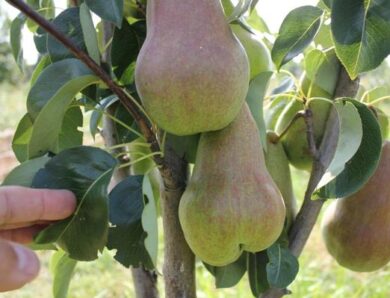Growing mushrooms in the basement: basic rules
Often the owners of summer cottages want to turn every meter of space into a useful one. Example, a cellar or cellar can be turned from a place of storage of a crop into a place of its cultivation. Today we will tell, how to grow oyster mushrooms in the basement, as well as mushrooms.
What should be the basement
Solving issues, how to grow mushrooms in the basement, first of all, you should think about providing the necessary conditions. As already mentioned, optimal for mushrooms will be breeding in a cellar or basement. Some try to grow oyster mushrooms and champignons in a house or apartment, however in the conditions of a living space to create comfortable conditions for growth of mushrooms it is practically impossible. Some mushroom pickers resort to landing in a brick garage., which can be a successful replacement for the cellar.
So, to date, growing mushrooms in the basement is economical and the least expensive of all the above options. However, to get a rich harvest, will have to carefully study the technology of growing oyster mushrooms and champignons.
Necessary lighting
Growing mushrooms in the basement does not require any sunlight, because mushrooms grow best in complete darkness.
Proper ventilation
Mushrooms in the basement require a proper microclimate, which is provided by means of constant maintenance in one indicators of level of ventilation, temperature and so on.
Open windows and doors should not serve as a ventilation system, which creates drafts. Supply ventilation may also be insufficient for this, to provide the culture with a constant supply of oxygen. The best option is a forced ventilation system, when metal lattices and small grids are established on purge openings, protecting plants from the invasion of rodents and insects.
Humidity and temperature
When growing mushrooms and oyster mushrooms, it is important to ensure a constant room temperature and high humidity. Mushrooms and oyster mushrooms in the basement are grown at a temperature of 12 to 27 ° C and humidity not lower 65%.
A thermometer is installed to maintain the temperature in the basement, as well as a heating system (underfloor heating, heaters). Because all artificial heat sources are very dry air, will have to maintain humidity manually, stocked up on polyethylene and sprinkler.
Zoning
Growing mushrooms in the basement can be carried out in the most modest conditions. To save useful space and plant as much planting material as possible, the construction of racks is recommended. Metal is used as a material, plastic and wood. However, it is better to choose stainless steel as a metal, and the wood to be treated with impregnations against rot, which is inevitable in conditions of high humidity.
Disinfection
In preparation for growing mushrooms in the basement stage with disinfection, apparently, the most important. Insects and fungal diseases are the enemies of the harvest. The main source of all problems is high humidity. So if the walls are earthen or wooden, the development of the fungus is inevitable.
In this case, it is important to ensure maximum distance from the ground and natural wood. To do this, the floors are filled with concrete, and the walls are lined with brick, plastered and treated with antifungal solution. The ceiling is whitewashed with a solution of lime and copper sulfate. All rooms are disinfected (example, formalin, fumigated with sulfur checkers) before each new landing. All elements of the device are also carefully treated with antiseptics, and utensils and small parts are boiled.
Varieties for cultivation
Not every farmer is ready to grow time-consuming varieties of mushrooms. Oyster mushrooms and champignons are selected as the best option for cultivation at home. However, there are different varieties among them.
Growing oyster mushrooms allows you to choose from many "home" species. These include Oyster mushroom, Oyster mushroom, Horny, Late and White Elf. There are other hybrids, however, they differ little from each other. Oyster mushrooms are very undemanding to soils and fertilizers, they give large yields and are resistant to infectious diseases.
There are a number of hybrids among mushrooms, which are offered by large nurseries and mushroom farms. They differ in size, shape and color, but similar in taste and vegetative characteristics.
Substrate preparation and planting
You can prepare the substrate in two ways - buy ready-made in the store or make your own. Prepare the substrate a month before planting mycelium, and used as ingredients:
- horse manure (if not, then cow or chicken manure);
- straw;
- urea;
- superphosphates and ammonium-containing fertilizers;
- chalk;
- gypsum or alabaster.
Horse manure and straw are pre-disinfected from parasites. Next, the straw is soaked in a warm solution of water and ammonium nitrate 24 years. At the end of the time the straw is transferred to the manure, moisten with ordinary warm water and leave for several days, then mix thoroughly. Then gradually at intervals of 3-4 days other ingredients are added, which are also mixed each time. When the temperature of the mixture drops to 25-23 °C, compost is ready to use.
Mycelium is of two types - grain and compost. Follow, so that there are no green or black spots on it when buying.
After laying the substrate, you can start growing mycelium. To do this, the compost mycelium is placed in pits, depth to 5 cm, located at a distance 15-20 see each other. Laid mycelium falls asleep and watered. Grain mycelium is simply scattered on the surface of the substrate.
Care and cultivation
During the development of fungal threads, the optimum temperature is 22-27 °C, after their appearance it decreases to 12-15 °C. The first fungal filaments appear through 2 weeks after planting, then the landing surface is covered with a mixture of peat, leaf soil and limestone (5:4:1).
Mushrooms love moisture, why the first 2 weeks they are sprayed every 3-4 days. To do this, the surface of the substrate is covered with polyethylene and sprayed with warm water. Then it is better to stop frequent moisturizing, so as not to cause rot of the mycelium.
Harvesting
The first wave of the harvest is waiting for you 12-16 weeks after planting, and regular fruiting will continue during the following 10-16 weeks. After each ripening mushrooms are carefully unscrewed, and in their place is placed a small layer of earth. After each collection, the substrate is watered with a solution of water and superphosphates.
Video "Technology of growing mushrooms"
In this video you will learn about it, how to grow mushrooms at home.




